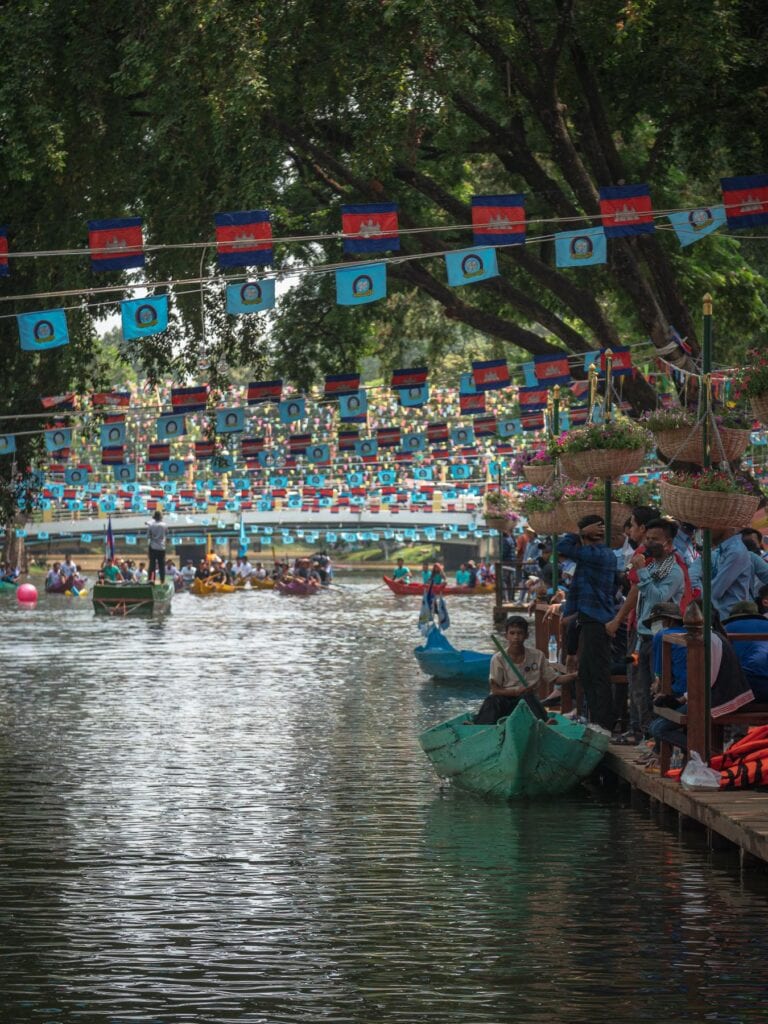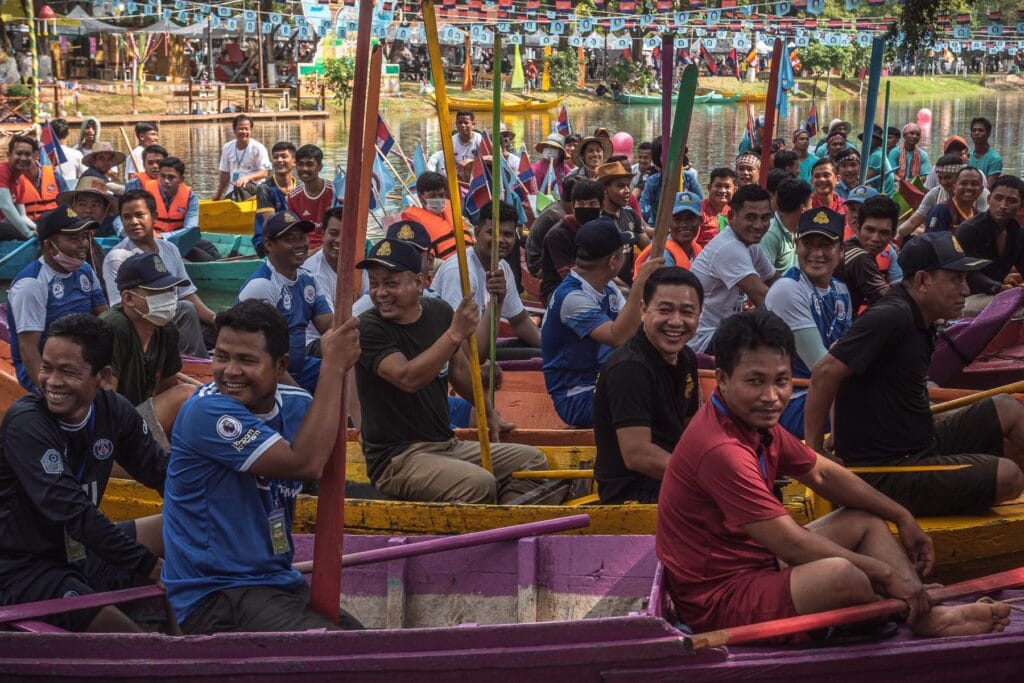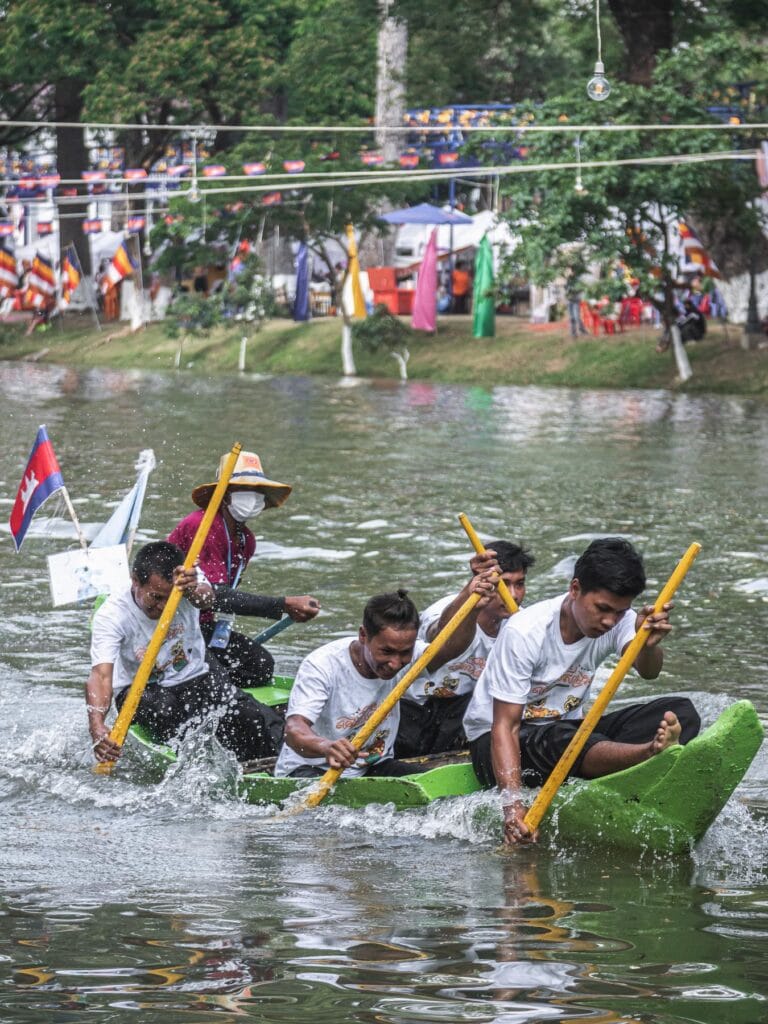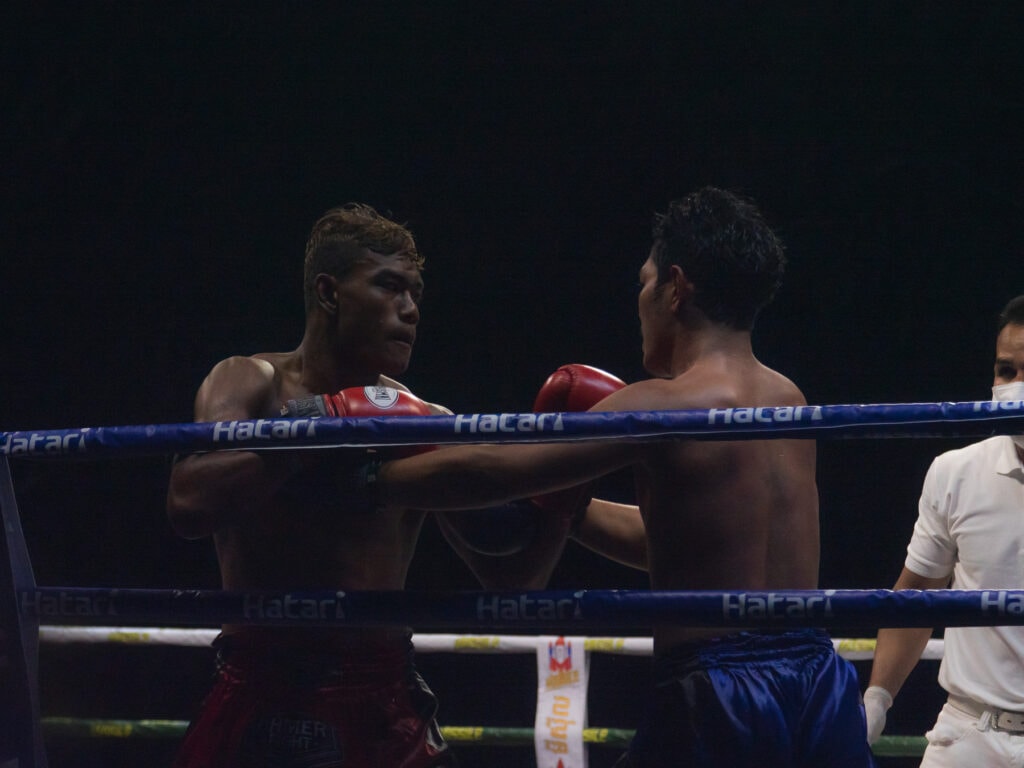
April, 16 2022
Khmer New Year in Siem Reap
After two years without celebrating Khmer New Year because of COVID restrictions, the people of Cambodia could finally go the streets and celebrate the most traditional festival of the country once again in 2022. Festivities happened all over the Cambodia and many cities were crowded all over the streets, but the Khmer New Year in Siem Reap was definitely something else. Khmers from all over the country and travelers from abroad visited the city in order to be participate in the festivities and to enjoy some of the many events that were organized both in the riverside area in the city center and also in the Angkor Complex. For three straight days, the crowds, events and festivities took over the streets.



What is Khmer New Year
Khmer New Year, also known as Choul Chnam Thmey or Moha Sangkranta is the most traditional and important holiday in Cambodia. It is a three-day public holiday that happens in mid-April and is eagerly celebrated all over the country. The festival celebrates the solar new year which is marked by the sun’s entry into the Constellation of Aries. The Khmer New Year in Siem Reap has in fact a long history behind, since the Khmer Empire was centrally located in the Angkor complex, which is just 5 kilometers from Siem Reap’s city center.
The solar new year, however, is also celebrated in other countries in Asia like Thailand, Laos, Myanmar, Sri Lanka, Nepal, Bangladesh and India. Most of these countries lie within the Bengali and Indian sphere of cultural influence, which means that historically, these countries have been influenced strongly by the Hindu calendar, which is based both on the moon and on the sun. Therefore, it is possible to say that Khmer New Year has its origins from Brahmanism, a part of Hinduism, which was the religion that Khmer people used to follow before Buddhism became the main religion in Cambodia. Throughout the past centuries, Buddhism became associated with the festival and gradually took important roles in the festivities.


Nowadays, celebrations start either on April 13th or April 14th. However, this was not always the case. Centuries ago, the Khmer New Year was celebrated in the first day of the lunar month in autumn, which falls within November and December. However, in 13th century, the Khmer King decided to move the festival to the fifth lunar month, in April, in order to coincide with the end of the harvesting season, which falls in April.
This made a lot of practical sense, since the period from November through March is the busiest season for farmers to reap or harvest their crops, which are mostly based on rice harvests. Therefore, in April, farmers, who constitute a huge part of Khmer population, can enjoy the fruits of their hard work before the rainy season begins.



Three Days Festivities
Like most New Year holidays in Southeast Asian countries, Khmer New Year is full of traditions, celebrations and rituals. It combines tradition, religion with a big focus on honoring ancestors and elderly people. Each day has a different meaning and traditions:
- The First Day of Khmer New Year
The first day of the Khmer New Year is called ‘Maha Songkran’. Similar to the Tamil tradition, it is believed that this was the day of creation. In Khmer tradition, the world was created by God’s angels and to welcome the angels, people will clean their houses and illuminate them with candles. Families will place an idol of Buddha on an altar.
- The Second Day of Khmer New Year
Also known as Virak Wanabat, the second day of Khmer New Year is a time to think of the less fortunate. People offer charity by helping the poor, servants and homeless. Families may go to monasteries to pay respect to their ancestors, and it also a time for family members to exchange gifts.
- The Third Day of Khmer New Year
On the third day of New Year celebrations, Buddhists wash and clean statues of Lord Buddha with scented water. This cleansing is done to ensure that Cambodia will receive all the water it needs in the coming year. Another tradition is that children wash and bathe their parents and grandparents in return for blessing and good advice for the future.


Khmer New Year in Siem Reap
After two years without celebrating Khmer New Year, celebrations were once again allowed in Cambodia. Khmer New Year in Siem Reap was definitively one of the busiest and most crowded cities. Khmers from all over the country and travelers from abroad visited Siem Reap to be part of the festivities. As a consequence, many hotels and restaurants were operating at full capacity after a long period of waiting. And many Tuk Tuk drivers were extremely excited with the possibility of finding more tourists to take around the city.
Throughout the busy streets and bridges, it was possible to see thousands of colorful decorations like flags and stars. In addition, many offerings were seen in front of houses. Furthermore, the city organized many events and programs around the city center like: food fair, floating markets, music concerts, classical dances and performances, boat racing, golf competition, lantern ceremonies, kickboxing competition and more. Some religious festivities also happened in Angkor complex. For three days in a row, people flooded the streets and the riverside. Water fights, talcum powder was spread all over and sometimes you couldn’t find a retreat.


Khmer New Year | Siem Reap | Cambodia
During the three days of festivities, I also had the chance to shoot some videos. This video, is basically in chronological order, showing a few of the events that happened within Siem Reap city.
